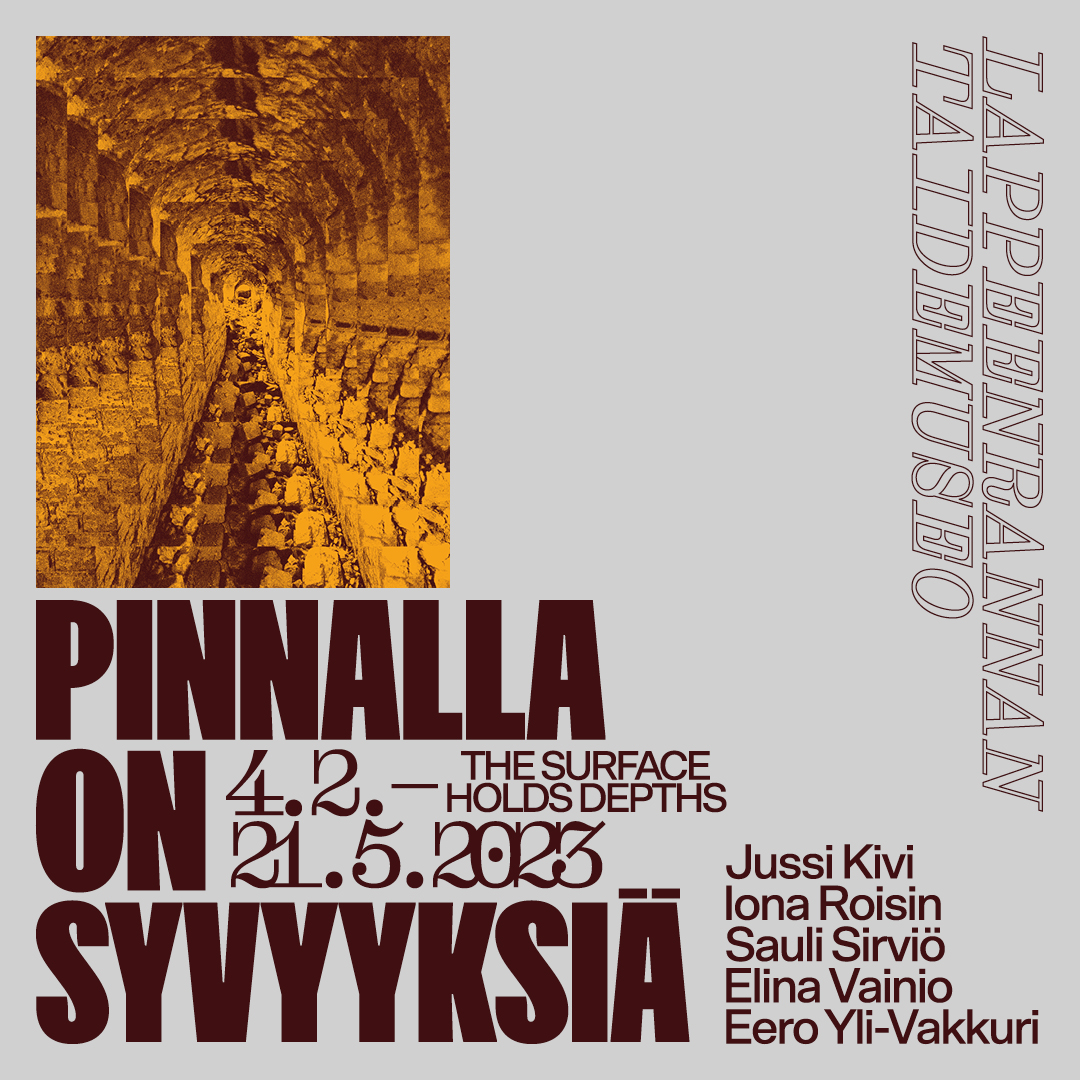
PINNALLA ON SYVYYKSIÄ
Lappeenrannan taidemuseossa 4.2.-21.5.2023
Rauniot, tieto, maantiede, ekologia, muisti, maisema, rakentaminen & valmistaminen, katoavaisuus.
Näyttely Lappeenrannan taidemuseossa esittelee teoksia, jota käsittelevät taltioimisen, aineellisten kiertokulkujen, rappeutumisen, nostalgian ja muistin kerrostumia.
Ennakoimme jatkuvasti tulevaa, vaikka meillä ei ole minkäänlaisia perusteita vakaille arvioille siitä, mitä tulee tapahtumaan. Mutta säilyttääksemme toimintakykymme, meidän tulee tehdä havaintoja siitä, miten asiat käyttäytyvät, mikä pysyy paikallaan ja mikä liikkuu.
Tilannekuva ei ole sama asia kuin todellisuus, mutta on tärkeää, että pystymme luomaan näkymiä niin tulevasta kuin menneisyydestä.
Näyttely perustuu taiteelliseen tutkimushankkeeseen Useissa raunioitumisen vaiheissa. Vuosien 2017-2022 ajan kuraattorit yhdessä taiteilijoiden kanssa ovat tarkastelleet paikan, ajan, rakenteiden ja erilaatuisten vuorovaikutusten suhdetta erityisiin 'raunioitumisen' prosesseihin.
Näyttelyssä on esillä teoksia taiteilijoilta: Jussi Kivi, Iona Roisin, Sauli Sirviö, Elina Vainio ja Eero Yli-Vakkuri.
Näyttelyn taustalla vaikuttaa Viipuriin, sekä Karjalan alueelle, ja Siperian halki Vladivostokiin, tehdyt matkat. Käsitteet kuten 'raunio' ja 'jäte' ovat toimineet sytykkeinä nostaen esiin teemoja tiedon muodostumisesta, muistista sekä erilaisista viittaussuhteista politiikkaan, geologiaan, kirjoitettuun historiaan sekä etäisyyksien, nykyhetken ja paikan kokemiseen. Näyttely Lappeenrannan taidemuseossa perustuu osin tutkimushankkeen aikana tapahtuneiden kokemusten varaan, esittäen tätä näyttelyä varten tehtyjä teoksia, mutta oleellisesti myös irrottautuen tästä kehyksestä ja tuoden esiin monimuotoisia materiaalisia kiinnittyneisyyden muotoja sekä läsnäolevan vuorovaikutuksellisuutta.
Näyttelyn kuraattorit: Miina Hujala ja Arttu Merimaa.
Kiitokset: Katja Kalinainen (Useissa Raunioitumisen vaiheissa-hankkeen assistentti vuosina 2018-2019), Matti Kunttu (hankkeen graafinen suunnittelu), Jaana Denisova-Laulajainen (venäjänkielinen käännös ja näyttelyn tuotanto-assistentti), Anna Ruth (englanninkielinen oikoluku).
Tutkimushanketta vuosina 2017-2020 on tukenut Koneen säätiö. Hanke on kuulunut taide- ja residenssi organisaatio HIAP:in (Helsinki International Artist Programme) suomalais-venäläiseen yhteistyöhön keskittyneeseen Connecting Points -ohjelmaan, jota, kuin myös tätä näyttelyä, on tukenut Suomen Opetus- ja kulttuuriministeriö.
LISÄÄ HANKKEESTA / TAUSTAA:
Alexander Etkind kirjassa Warped Mourning (2013) käsittelee suremisen ja muistin kulttuuria venäläisessä kontekstissa. Tässä yhteydessä hän tuo esiin myös ajatuksen, että mennyt ei ole läsnä muuten kuin luotuna. Pääasiallisesti kirjallisuutta ja elokuvia tarkastellen hän esittää kuinka nimenomaan vuorovaikutus (interaktio) tekstien ja monumenttien välillä tuottaa kulttuurisen muistin (muistamisen) ytimen. Tarvitsemme siis aktiivista liikettä. Hän puhuu aikaan liittyvästä muistamisesta 'muisti-tapahtumina' (memory events), jotka ovat menneen uudelleen kohtaamisia ja luovat poikkeaman vakiintuneen kulttuurillinen merkityksen kanssa. Ne muuttavat sen, kuinka ihmiset paitsi muistavat, myös kuvittelevat, ja puhuvat menneestä. Mutta niiden vaikutusvoima riippuu sen totuusväittämistä, siitä uskooko yhteisö väittämien alkuperään ja poikkeaman tärkeyteen suhteessa yhteisön identiteettiin. Kun kysymme; miten taiteilija on tiedon tuottajana - kysymme samalla sitä, miten uskoa erilaisten asioiden merkitykseen luodaan. Mitä tarkoittaa dokumentoida ja esittää päätelmiä aktiivisena, taiteellisena (luovana) toimintana?
Taiteilijat Iona Roisin, Elina Vainio ja Eero Yli-Vakkuri ovat olleet kutsuttuina mukaan eräänlaisena tutkimusryhmänä; toteuttamaan uuden teoksen liittyen aiheeseen. Roisin tarkastelee nostalgian ja ulkopuolisen tarkkailijan roolia matkakertomus-videon formaatin kautta väylänä käsitellä sitä, miten on mahdollista, tai eettistä, lähestyä eri aiheita ja alueita. Taltioitu materiaali niin Viipurista, Pietarista kuin Trans-Siperian junamatkoilta toimii aineistona ja kehikkona. Vainio niin ikään käsittelee teoksissaan henkilökohtaisuutta ja erityisesti ristiriitaisuutta kokemuksessa, tässä yhteydessä suhteessa Venäjään, sinne kohdistuneisiin matkoihin sekä merkityksiin. Videoteoksessa vuodelta 2019 Svetlana Aleksijevitšin lause hajaantuu Viipurin ja Vladivostokin välille, ja näyttelyyn tehdyissä reliefeissä kerätään ja kasataan henkilökohtaisia ajatuksia ja tunteita materiaalisten tulkitsemisen keinoin. Veden materiaalisuus on läsnä Yli-Vakkurin teoksessa, jossa lähteiden ja suodattumisten syklit kierrättyvät paikalle rakennettuna vesilaitoksena. Teoksessa käytetyt vedet on kerätty eri luonnon lähteistä sekä Suomessa että retkiltä Karjalan alueelle. Taiteilija Jussi Kiven laaja työ erilaisten raunioiden ja jäännösten kuvaajana, etsijänä ja seikkailijana, on inspiroinut koko hankettamme. Tässä näyttelyssä esillä on kokonaisuus kuvia jotka tarkastelevat kohtaamista amerikkalaisen pikkukaupungin kanssa, niin muistojen, kuin Google Streetview'n välittämän aineiston kautta. Miten saada yhteys muutokseen ja liikkeeseen on yksi elementti, joka myös liittyy Sauli Sirviön työskentelyyn, joka on matkustanut monenlaisilla epäselvillä ja katoavaisilla junakyydeillä, tuoden esiin teoksissaan infrastruktuurien hajoamisien dynamiikkaa. Esitimme Sirviön teoksen We need oil to breathe (2018) osana liikkuvaa näyttelyämme matkatessamme Vladivostokiin vuonna 2019, tähän näyttelyyn Sirviö teki uuden kokonaisuuden teoksia, jossa ajallinen valottuminen eräänlaisen materiaalisen ylijäämän kanssa saa sijansa.
Olemme havainnoineet 'nykyhetken' todellisuutta; ihmistenvälistä vuorovaikutusympäristöä ja siihen liittyviä mahdollisuuksia. Erilaiset luottamuksen kriisit, jotka sävyttävät, paitsi poliittista ja tiedonvälityksen, ilmapiiriä, myös ylläpitävät jatkuvaa epävarmuuden tunnetta - joka tekee eräänlaiseen fiktiiviseen menneisyyteen palaamisen helpommaksi (eräänlaiseen nostalgiaan hakeutumisen) kuin uuden tulevaisuuden näkymän muodostamisen. Kirjassa Arts on Living on a Damaged Planet (2017) Anna Tsing (et al.) käsittelevät "moninaista olemistamme" suhteessa muutoksiin, joita tiede ja tieto on tuonut esiin suhteessa paitsi yhteiseen läsnäoloomme tällä planeetalla, myös siihen liittyviin haasteisiin, joita esimerkiksi ilmastonmuutos ja lajien vähentyminen tuovat esiin. Tsing ja kumppanit käyttävät sanaa 'maisema' (landscape) kuvaamaan sitä, miten olemme läsnä yhteisessä todellisuudessamme niin ilmastollisten, kuin mikrobiaalisen sekä mineraalisen todellisuuden kanssa.
Tsing (+ muut) tuovat mukaan myös 'raunion' käsitteen, puhuessaan sekä hirviöistä ja haamuista, joita nykyhetki on täynnä; jäljelle jääneitä muotoja, jotka joskus olivat tarkoitettu jonkin lajiominaisuuden vastaanottavaksi (kuten kasvin kukinto, joka on kehittynyt muistuttamaan erään pölyttäjän sukupuolielimiä houkutellakseen tätä pölyttäjää, joka nyt on kuollut sukupuuttoon.) Näitä eräänlaisia biologisia, sekä myös toiminnallisia, raunioita huomatakseen, tarvitaan löytöretkeilijän asennetta, ja museo on aina ollut eräänlainen keräilijän kabinetti, jossa tietoon luodaan aina uudestaan materiaalinen suhde. Mutta samalla se taltioinnin paikkana pysäyttää itse esineet hajoamiselta. Käynnissä olevan luontokadon pysäyttämisen vaikeus on läsnä, monia tuttuja ympäristöjä ja lajeja kadotetaan, se voi saada monet haikeiksi, mutta tämän kadotuksen taltioimisen sijaan aktiivisuus uusien suhteiden muodostamisessa, sekä olemassa olevien suhteiden tärkeyden huomioinnissa, on vilpittömästi keskeistä. Lajien välinen keskinäisriippuvuus ja monimuotoisuuden ymmärtäminen on tärkeää, kun etsitään kestäviä ja mahdollisia ratkaisuja ja maailmoja, kenties nimenomaan Tsingin otsikon mukaan "elää vaurioituneella planeetalla".
Kun mietimme mahdollisuuksia toimia tässä 'vaurioituneen planeetan' tilanteessa, on kyse myös paikkojen ja taideteosten läsnäolosta todistusaineistona - eräänlaisina tulevaisuuden ja menneisyyden näkyminä. Museoiden suhde totuuteen ja todistusvoimaan on myös mahdollisuus tuoda esiin asioita tarkastellen niiden suhdetta erilaisiin valta- ja merkityskontrolleihin nähden - erityisesti suhteessa epäilyyn asioiden aitoudesta, johon totuuskäsitys usein liittyy. Etkind muistelee kirjassaan: "Medvezhiegorskin museon johtaja kertoi minulle, että on helpompi avata kokonainen näyttely, joka käsittelee poliittista sortoa museon seinien sisälle, kuin laittaa yksittäinen infokyltti massamurhan paikalle." Nykyinen 'totuudenjälkeisyyden kriisi' on osa moninaisia vuorovaikutuksen mahdollisuuden laajenemisen prosesseja, jotka myös kiihdyttävät mielipiteiden esiintuontia, mutta samalla korostavat tarvetta saada aitoja yhteyksiä paitsi ihmisten välille, myös liittyen muistin ja merkityksen muodostamisen muotoihin, käsitellä sitä mikä on arvokasta ja mikä on totta. Lähtökohtana on ajatus, että on oleellista huomioida jatkuvasti, kuinka rakennetaan kuvia asioista ja tapahtumista, joissa ei ole konkreettisesti kokijana "läsnä" sekä myös kuinka välittää tietoa läsnäolosta.
Näyttely käsittelee aiheiden kuten - muisti, tieto ja raunio samanaikaista "resonointia" - niin poliittisen kuin fyysisen tilan - etäisyyksien ja kerrostumien kanssa. Näyttelyssä kysytään miten (ja mille) etäisyydet ja läheisyydet rakentuvat, kun elämme eräänlaista 'maailmassa olemisen' jatkuvan muutoksen aikaa. Ei voi olla huomioimatta, kuinka näyttelyn suunnittelun aikana asiat ovat olleet valtavassa ja dramaattisessa liikkeessä. Kuinka alustavasti vuodelle 2020 suunniteltu näyttely siirtyi globaalin pandemian takia vuosilla eteenpäin, ja sitten Venäjän aloittama aggressiivinen hyökkäyssota muutti paitsi näyttelyn konkretiaa myös tematiikkaa, ja esimerkiksi hankkeemme otsikon 'raunio' luentaa. Kun Ukrainaa pommitetaan raunioiksi, kyse ei ole vain menneisyydestä. Raunioita tehdään parhaillaan, ja sodan tuomitseminen, sekä ukrainalaisten tukeminen - kaikilla tavoilla - on oleellisinta. Tämä tarkoittaa myös venäläisten kanssa tehtävän yhteystyön rajaamista. Olemme tehneet vuosien varrella yhteistyötä monien venäläisten taiteilijoiden kanssa, ja halunneet korostaa yhteisymmärrystä ja tulevaisuuden rakentamista yhä totalitaristisemmaksi käyvän hallinnon vaikutuksesta huolimatta. Sodan todellisuudessa tilanne ei ole sama kuin aiemmin. Ymmärrämme hyvin, että sotaa vastustavien ihmisten tilanne Venäjälläkään ei ole helppo, ja on vaikea nähdä tilanteen parantuvan, mutta vuorovaikutuksen muotoja ja reittejä on uudelleen jäsennettävä.
Koska meille on ollut tärkeää hankkeessa havainnoida, kuinka erilaisia etäisyyksiä rakennetaan ja ylläpidetään, olemme halunneet tehdä näyttelyn nimenomaan Lappeenrannan taidemuseoon. Raja Venäjän kanssa on Lappeenrannassa lähellä, ja Viipuri, sekä Karjala alueena, johon tutkimusmatkamme kohdistuivat vuosina 2018-2019, ovat oleellisia osia Suomen historiaa. Emme voi, eikä meidän pidä ohittaa sitä. Muistaminen liittyy tähän oleellisesti. Nykyhetki ei ole mikään itsestään selvä kokonaisuus, vaan muokkautuu jatkuvasti. Näyttely Pinnalla on syvyyksiä osallistuu tämän muokkautumisen todentamiseen ja työstöön. Teksti: Miina Hujala
THE SURFACE HOLDS DEPTHS
Lappeenranta Art Museum 4.2.-21.5.2023
Ruins, knowledge, geography, ecology, memory, landscape, construction and preparation, disappearance.
This exhibition, at the Lappeenranta Art Museum, presents artworks that deal with the layers of recording, material circulation, decrepitation, nostalgia and memory.
We constantly predict the future, even though we don't have any stable ground for predicting what will happen. But in order to hold on to our functional ability, we need to make estimates about how things behave - what is staying put and what is changing.
An image of a situation is not the same as reality, but it is important to be able to form views about the future as well as the past.
The exhibition is based on the joint, artistic research project called In Various Stages of Ruins. Over the course of the years 2017-2022, the curators, together with the artists, considered the relationships between aspects of time and place, as well as the structures and various qualities and processes of 'ruinification'.
Exhibition presents work from the artists Jussi Kivi, Iona Roisin, Sauli Sirviö, Elina Vainio and Eero Yli-Vakkuri. One aspect of the project leading up to this exhibition were research trips made to Vyborg, to the Karelia area, and through Siberia to Vladivostok. Concepts such as 'ruin' and 'waste' functioned as instigators of thought for the project, branching out into themes about the formation of knowledge and memory, about the different sorts of perspectives attached to politics, geology, and written history as well as about experiences related to distance, place and the present time. The exhibition at the Lappeenranta Art Museum is partly based on experiences from these research trips, and presents new work specifically created for this exhibition. In addition, and most crucially, the work in this exhibition departs from the research framework and brings forth versatile modes of material attachment and interaction with 'what is present'.
The curators of the exhibition: Miina Hujala & Arttu Merimaa
Thanks: Katja Kalinainen (The assistant for the 'In Various Stages of Ruins' project between the years 2018-2019). Matti Kunttu (graphic design), Jaana Denisova-Laulajainen (Russian translation and production assistance), Anna Ruth (English proofreading).
This research project was conducted with the support of the Kone Foundation for the years 2017-2020. The project was part of the residency organisation, HIAP's (Helsinki International Artist Programme) Connecting Points programme which concentrates on Finnish-Russian collaboration, supported by the Finnish Ministry of Education and Culture.
MORE ABOUT THE PROJECT / BACKGROUND:
In his book 'Warped Mourning' (2013) Alexander Etkind writes about the culture of grieving and memory, within a Russian context. He brings forth the idea that the past does not exist in the present except when created (in the present). Through the examination of literature and cinema he states that the core of cultural remembrance is produced by the interaction between texts and monuments. We need active interplay. He speaks about remembering as connected to time in 'memory events', that are re-encounters with the past and create a deviation from established cultural meanings. They change how people not only remember, but also imagine and speak of the past. But the influential power of this is dependent upon their claims to truth; the audience's belief in the origin of the statements and the importance of this deviation in relation to the identity of the community. When we ask; how is an artist a knowledge producer - at the same time we are asking how the belief in the meaning of various things is created. What does it mean to document and present statements as an active, artistic (creative) action?
Artists Iona Roisin, Elina Vainio and Eero Yli-Vakkuri were invited to form a kind of research group; to make new work related to the subject matter. Roisin examines the role of nostalgia and the position of an outsider through the format of a travelogue-video, and in this way deals with what is possible, or ethical, when approaching different themes. Recorded and captured material from Vyborg, St. Petersburg as well as from the Trans-Siberian train journeys function as the source of material as well as the framework for this travelogue. Vainio also uses a personal approach, especially in considering contradictory sentiments of an experience - with regards to Russia, to the trips made there, and their related implications. A sentence borrowed from Svetlana Alexievich, is divided between Vyborg and Vladivostok in a video work made in 2019. The reliefs made for the exhibition interpret collected and gathered material with private sentiments and thoughts. Water is the material for Yli-Vakkuri's work where different springs along with various filtration cycles circulate on site as a built-in water treatment plan. The water used in the work was collected from natural springs in Finland as well as from sources found during excursions to the Karelia area.
The oeuvre of artist Jussi Kivi, photographer, explorer and adventurer of ruins and remnants, inspired our entire project. In this exhibition are images that record the artist's encounter with a small American town, using memories along with material from Google street view. How to make a connection to change and movement is an element that is tied into the work of Sauli Sirviö, who has been travelling along many kinds of uncertain and disappearing railways, and bringing forth the dynamics of dismantling infrastructures. We presented Sirviö's work 'We need oil to breathe' (2018) as a part of our mobile exhibition whilst travelling to Vladivostok in 2019. For this exhibition in Lappeenranta, Sirviö made a new series of works where temporal exposure to light, alongside a sort of material excess, play a central role.
We examined realities of the 'present'; the environment of interaction between people and the possibilities tied to this. Multiple crises of trust - which are not only visible in the atmospheres of politics and information distribution - also aid in maintaining a constant feeling of uncertainty, and make returning to a sort of fictive past easier (looking for nostalgia) - than forming a new vision of the future. In her book 'Arts on Living on a Damaged Planet' (2017) Anna Tsing (et al.) brings to light our 'multiple beings' in relation to change that the production of science and knowledge have brought forward - not only with regards to our shared existence on the planet, but also in the challenges connected to what we face, as with for instance,climate change and species loss. Tsing and others use the word 'landscape' to depict how we are present in our shared reality with climatic, as well as microbial and mineral, realities. Tsing (et al.) also evokes the concept of a 'ruin' when she speaks of monsters and ghosts that fill the present; the forms that are left behind, forms that were once meant to be receptive to a certain species' attributes (like the blossom of a plant that developed the appearance of a certain pollinator's genitals to attract this pollinator, which has now gone extinct). In order to become aware of these certain types of biological and operational ruins, one needs to adapt the attitude of an explorer, and a museum has always been a sort of collector's cabinet, where the material relationship to knowledge is continually renewed. But at the same time, the museum is a captor that prevents the decomposition and disintegration of objects. The ongoing loss of nature is acute and difficult to obstruct, many familiar environments and species will disappear, and it might make many of us very melancholic and sad, but it is sincerely crucial to actively form new relationships and to recognise the importance of our existing relationships as well, instead of just documenting this disappearance. Interdependence as well as understanding the versatility of species is important when we seek durable, and possible solutions and worlds, perhaps the title of Tsing's book presents a way "to live on a damaged planet".
When thinking of possibilities of how to function in the condition of this 'damaged planet', I find it is also about sites and artworks as evidence of various visions of past and future. The role of the museum in relation to truth and the power of proof also provide the possibility to examine the relationship of different forms of control of meaning - especially when doubt is attached to the truth-concept with regards to the authenticity of things. In his book, Etkind recalls: "Medvezhiegorks's museum director told me that it is easier to open an entire exhibition that deals with political oppression inside the museum than to put a single info sign on to a site of a mass murder." The ongoing 'crisis of post-truth' is part of multiple processes of expansion of communication that accelerate the bringing forth of opinions, but at the same time highlight the need to obtain genuine connections, not only between people, but also in relation to memory and forms of meaning making, in order to deal with what is valuable and what is true. It is relevant to constantly observe how the images of things and events are constructed; images of situations where one has not been physically present, and how to communicate knowledge of being present.
The thematic of this exhibition simultaneously deals with the resonance of memory, knowledge and ruin - within both political and physical spaces - including their distances and layers. This exhibition considers how, and by what means, distance and proximity are built within the constant alteration of the existing world. One cannot help but notice how during the planning of this exhibition there were vast and dramatic changes. How the exhibition that was initially planned for the year 2020, was postponed due to a global pandemic and then, after Russia launched its aggressive attack on Ukraine, the changes which ensued were not only experienced in the practical aspects of the exhibition but also in the thematic - as for instance with the word 'ruin' in our project's title.While Ukraine is currently, in very literal terms, being bombed into ruins, it is not only the past which is being brought into question. Ruins are constantly being made. Condemning the war and supporting Ukrainians - in all possible ways - is of the utmost importance. This also means limiting collaboration with Russians. Over the years we have worked with many Russian artists, and have wanted to bring forth mutual understanding in order to build a future despite the effects of the ever increasingly totalitarian regime. In the reality of war, things are not the same as before. We completely understand that it is not easy for the people in Russia who are against the war, and it is hard to foresee any alleviation, but the forms and routes of interaction have to be recalibrated.
The perception of different distances, along with how they are constructed and maintained has been an integral part of this project and we therefore specifically chose to present this exhibition at the Lappeenranta Art Museum. Lappeenranta is close to the Russian border, and to Vyborg, as well as to the Karelia area where our explorations took place between 2018-2022. We can't, and we shouldn't bypass the importance of these locations as integral parts of Finnish history. Remembering is an elemental part of history. The present is not a self-evident totality but one that is in constant formation. The exhibition The Surface Holds Depths participates in acknowledging this processing and formatting of memory.
Text: Miina Hujala
KUVIA NÄYTTELYSTÄ / IMAGES OF THE EXHIBITION :
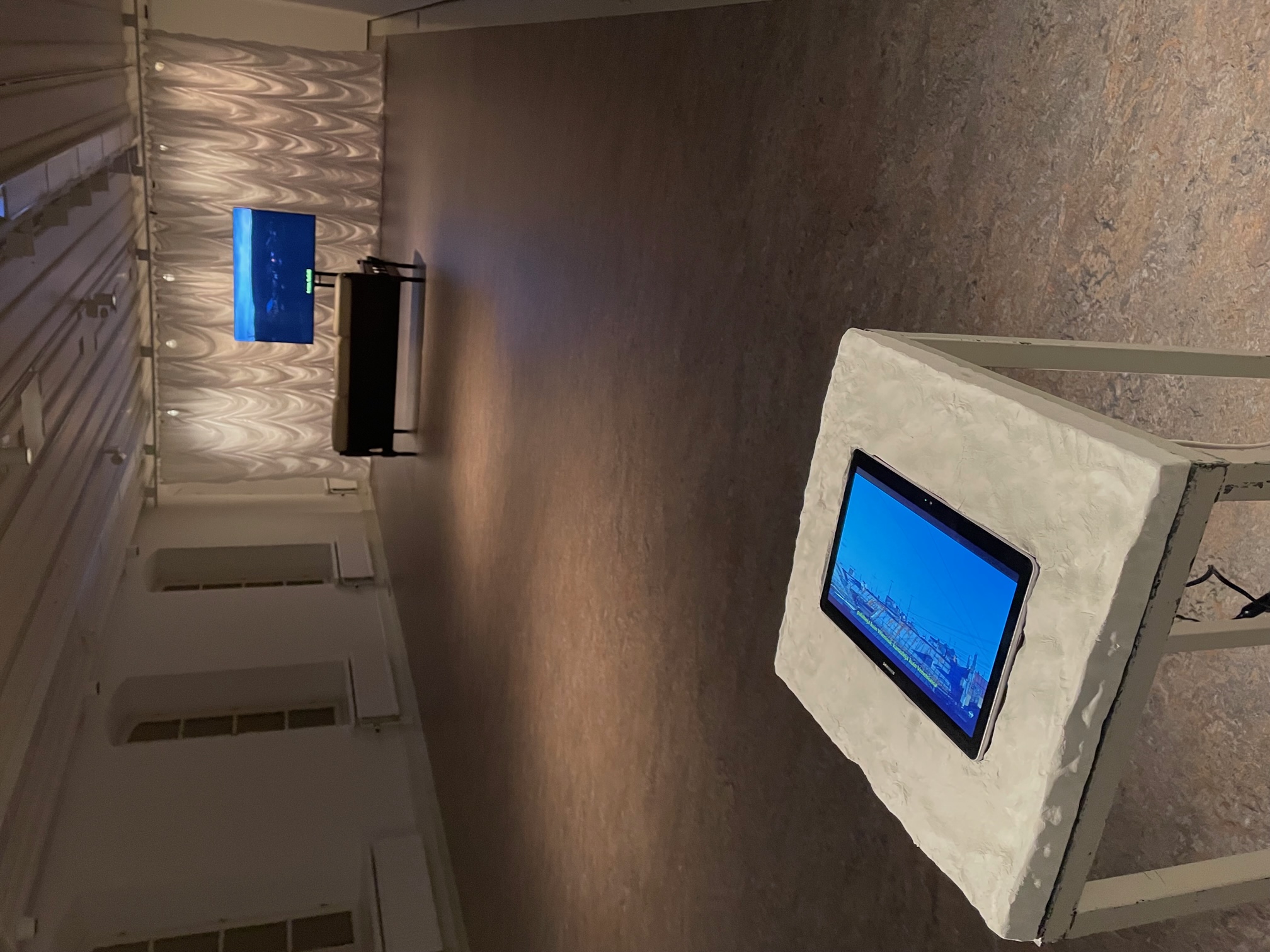
Kuvassa / In the image room with work by Iona Roisin.
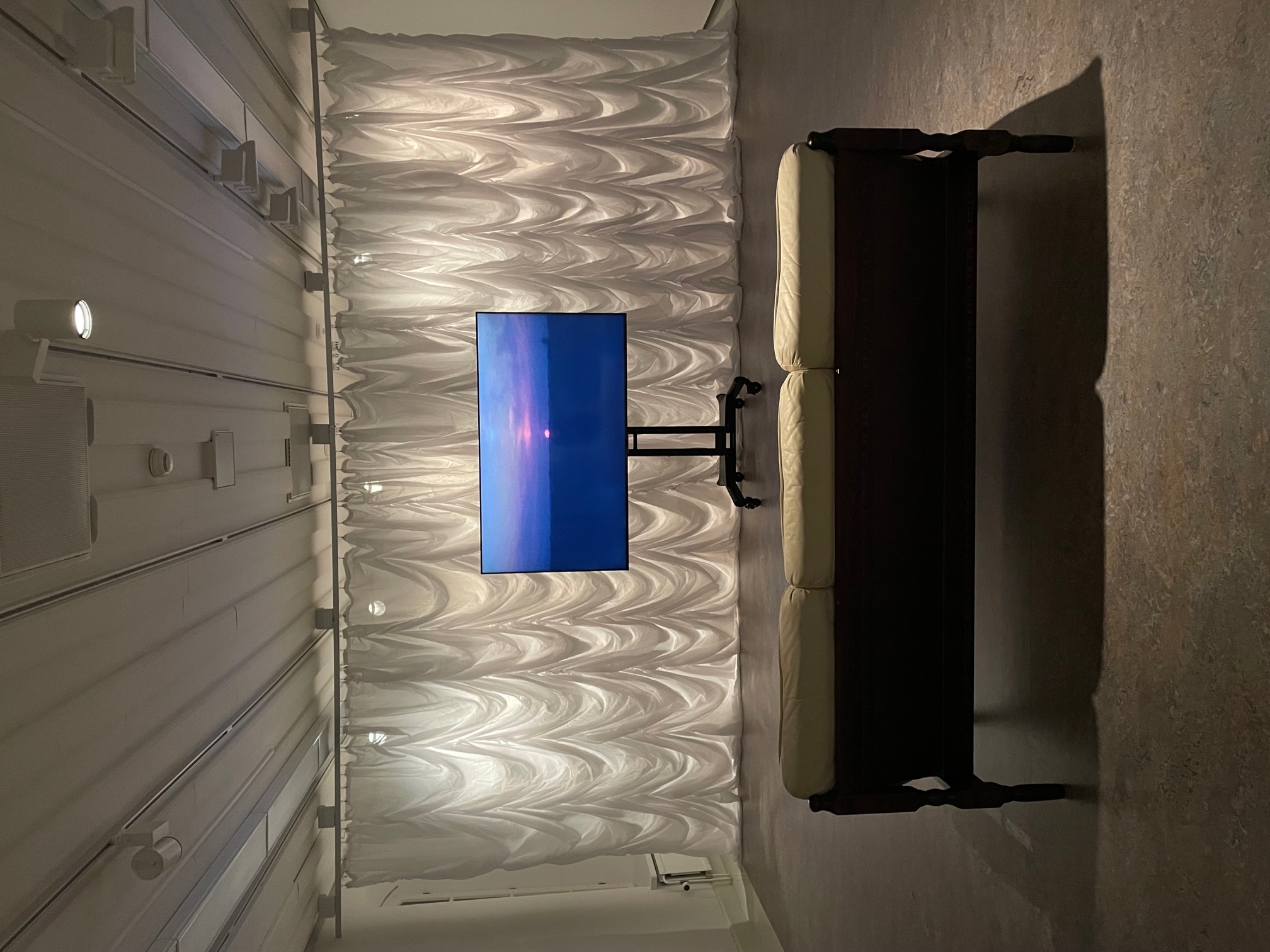
Kuvassa / In the image an installation of the work 'An Uncountable Number of Threads' by Iona Roisin.

Kuvassa / In the image a photograph of an glasstile from the collection of South Karelia Museum, that is a part of Wiipuri Museum Collection. Glasstile is from the Vyborg railway station, that was designed by Eliel Saarinen (1913) and was destroyed in the continuation war in 1941.
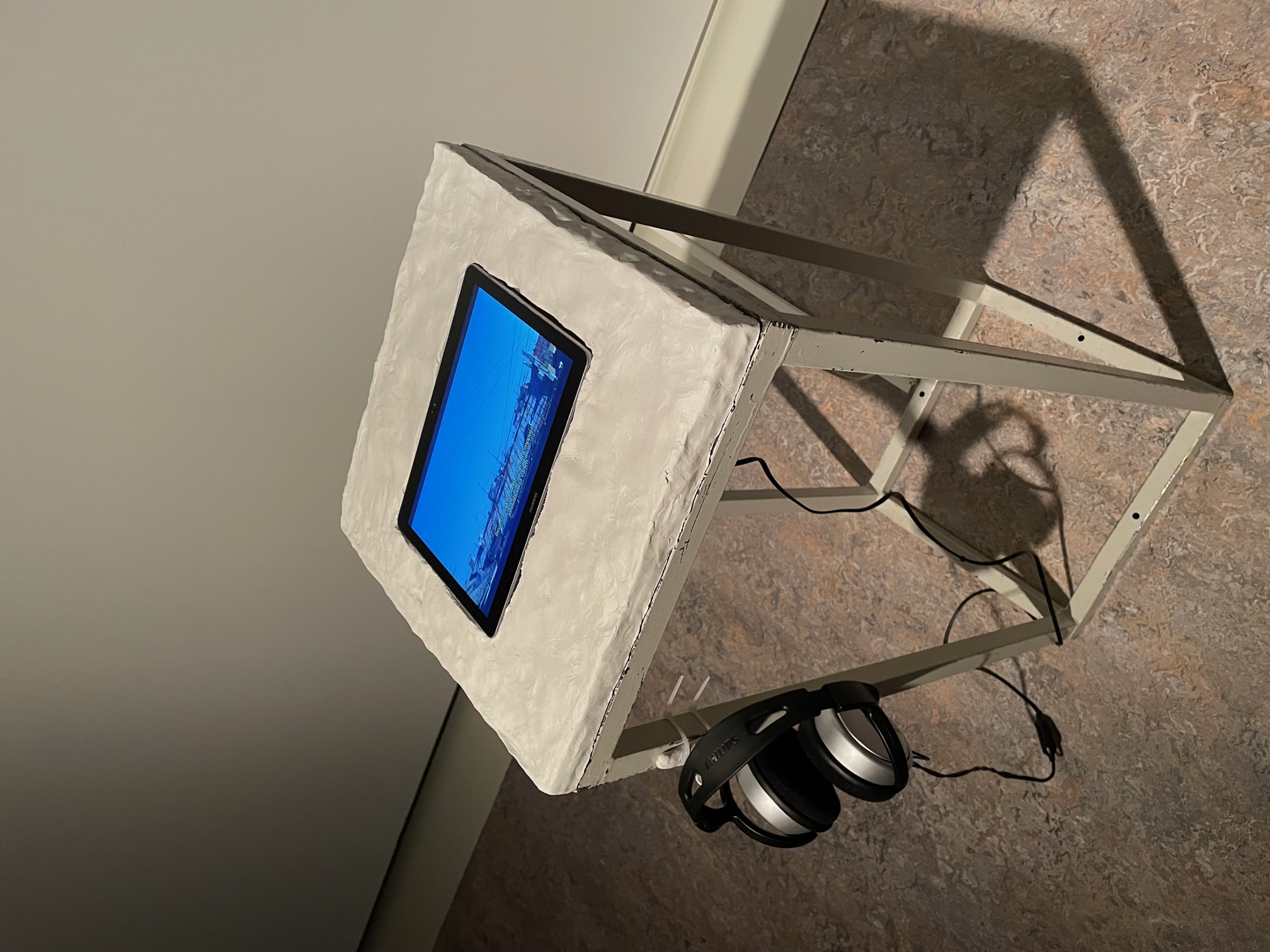
Kuvassa / In the image an installation of the work 'Sketch for a postcard in 2019' by Iona Roisin.
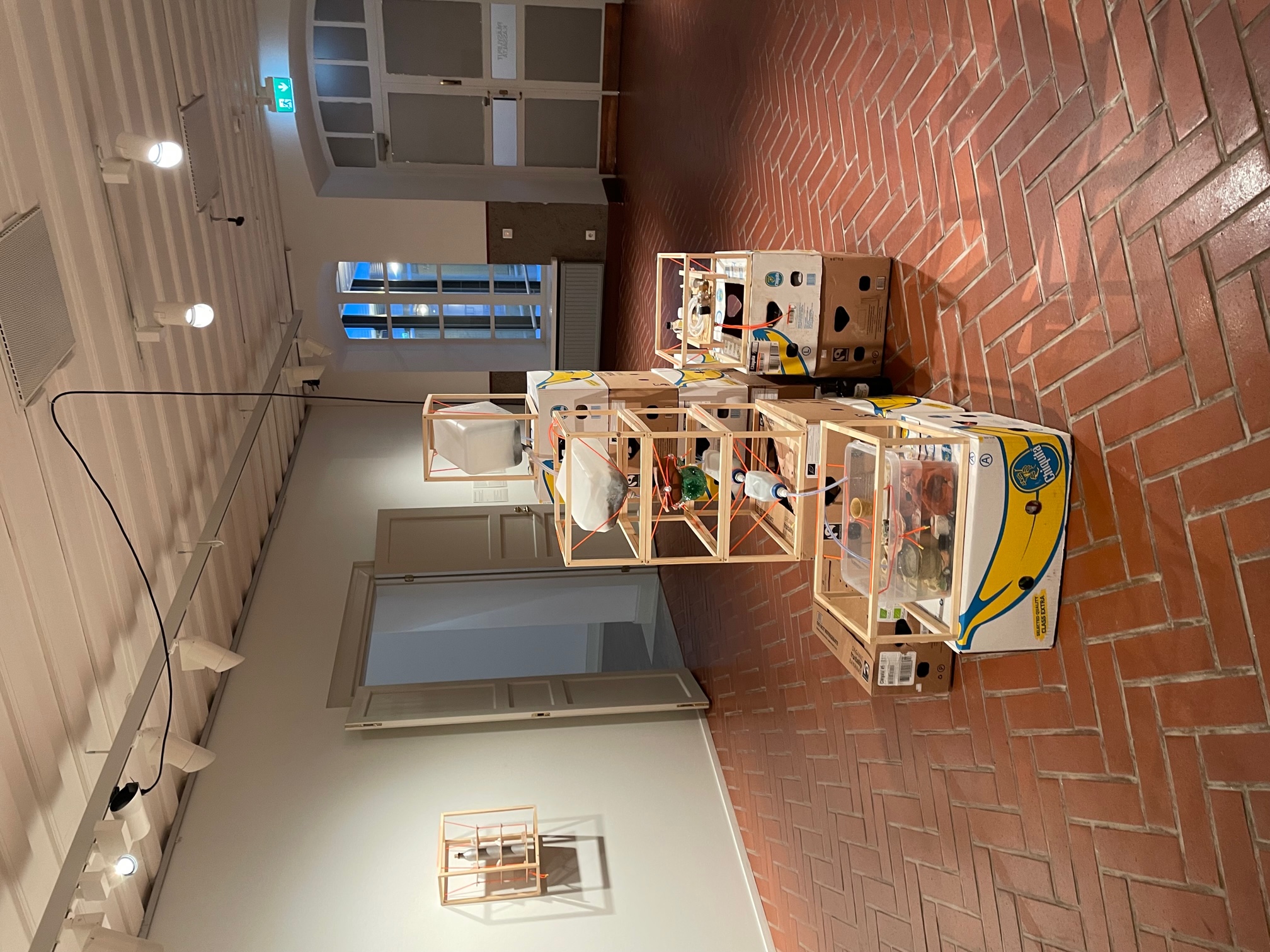
Kuvassa / In the image an installation of the work 'Our Grand Water Treatment Plant' by Eero Yli-Vakkuri.

Kuvassa / In the image an installation of the work 'Our Grand Water Treatment Plant' by Eero Yli-Vakkuri.
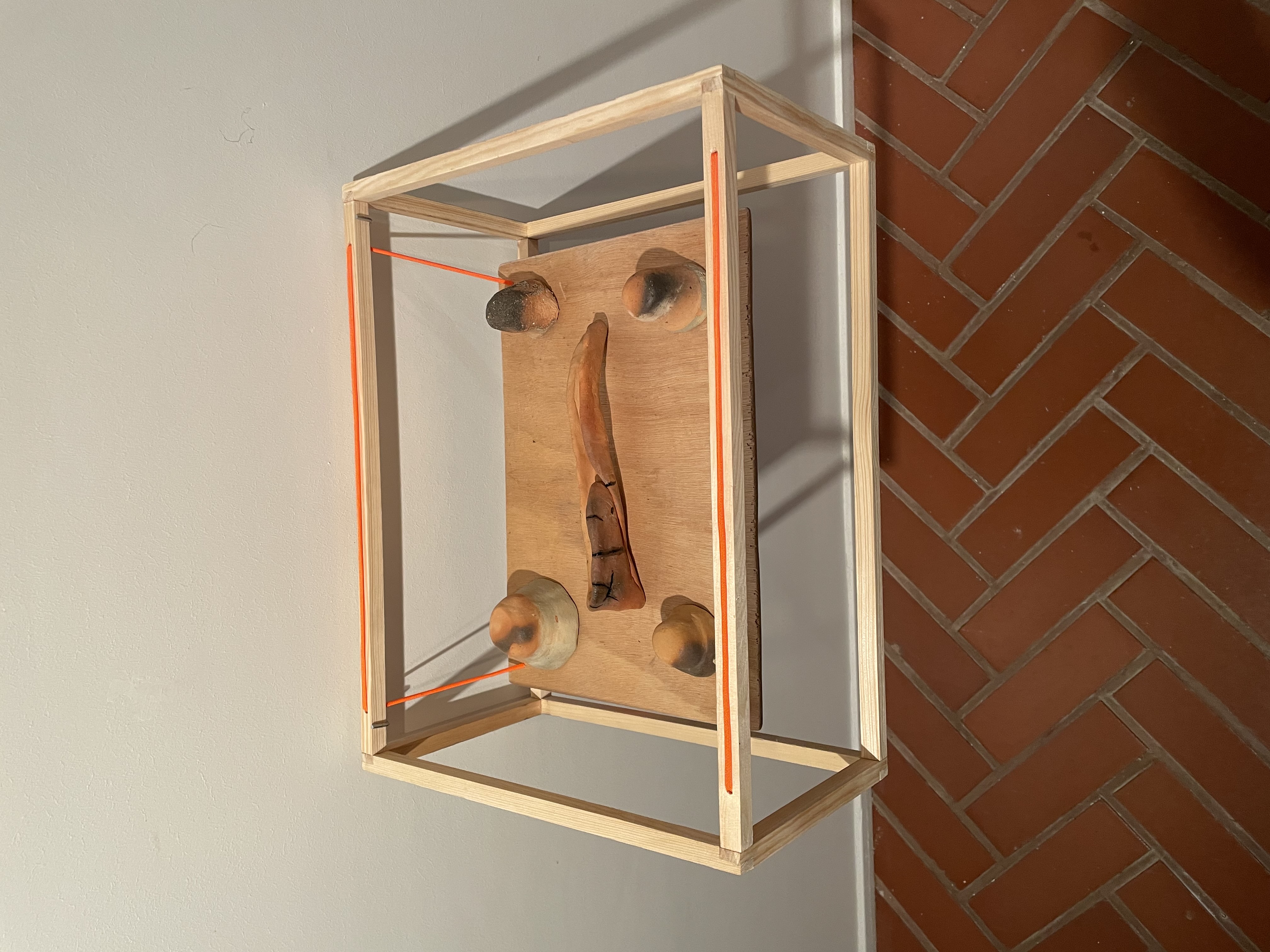
Kuvassa / In the image an installation of the work 'Our Grand Water Treatment Plant' by Eero Yli-Vakkuri.
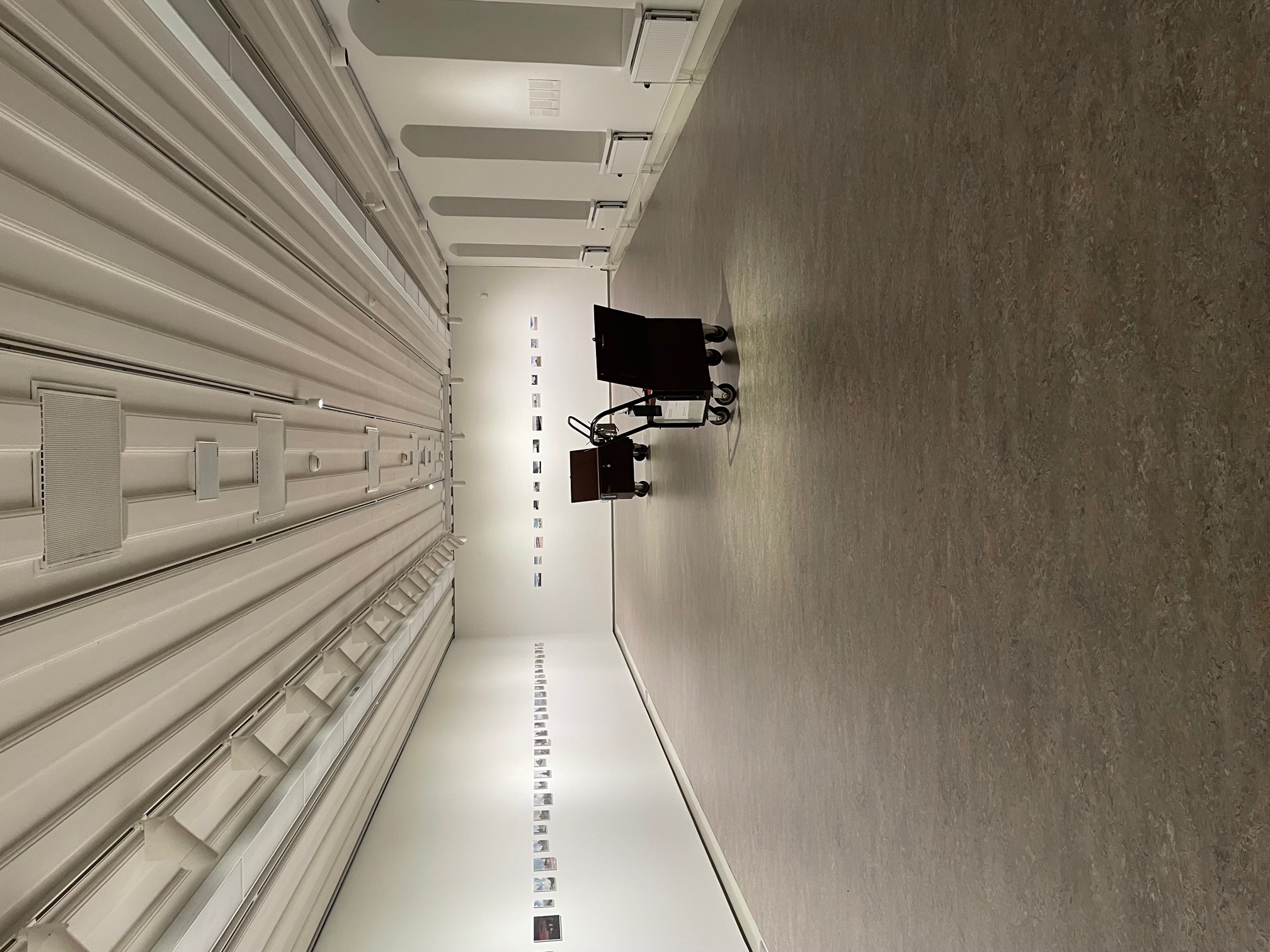
Kuvassa / In the image room with work by Jussi Kivi and Sauli Sirviö.

Kuvassa / In the image part of the work 'fermetures nocturnes ' by Sauli Sirviö.

Kuvassa / In the image work 'A road trip with Hodward Epper' by Jussi Kivi.

Kuvassa / In the image work 'A road trip with Hodward Epper' by Jussi Kivi.
.jpg)
Kuvassa / In the image work 'A road trip with Hodward Epper' by Jussi Kivi.

Kuvassa / In the image room with work by Elina Vainio and Sauli Sirviö.
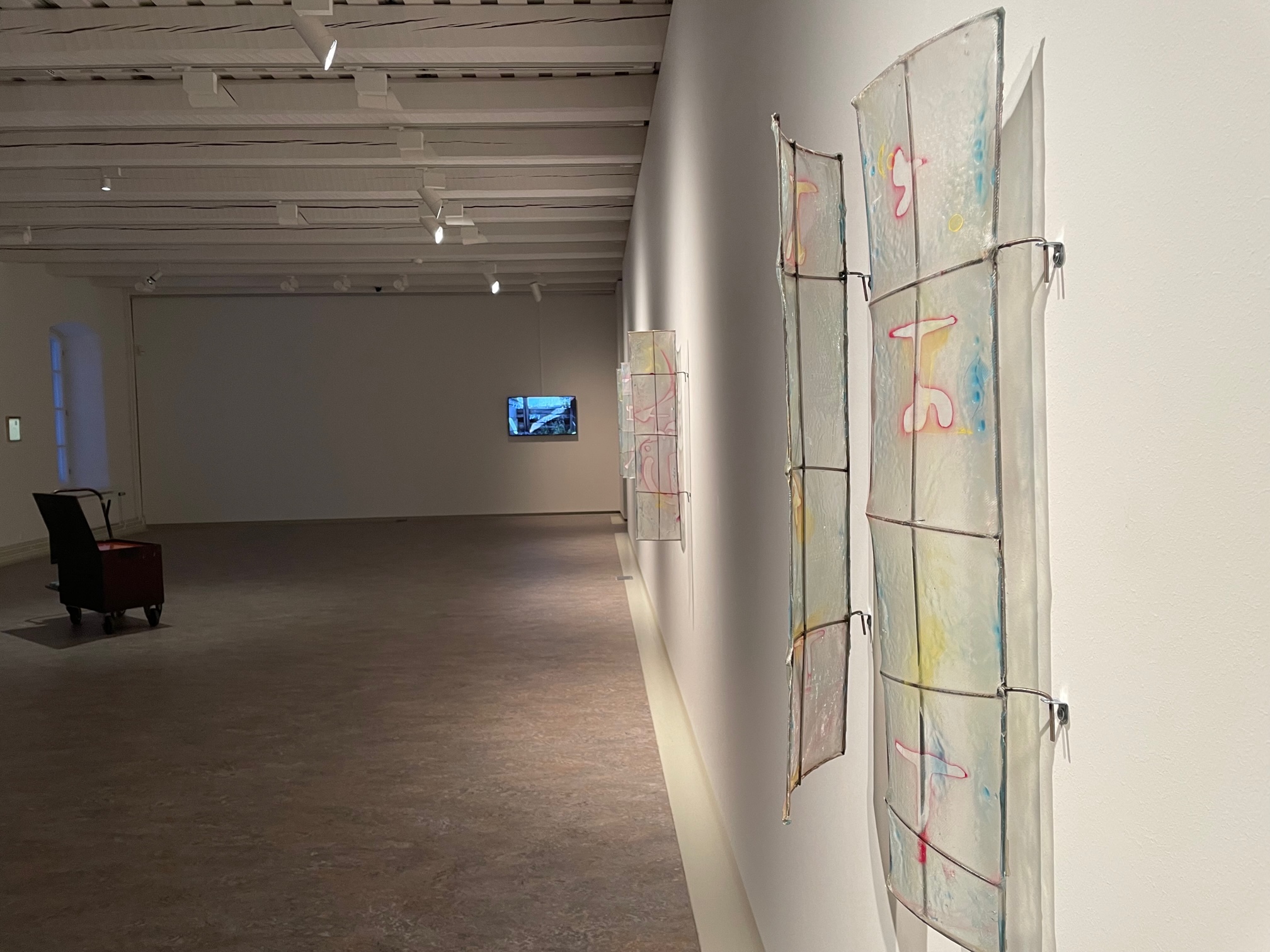
Kuvassa / In the image room with work by Elina Vainio and Sauli Sirviö.
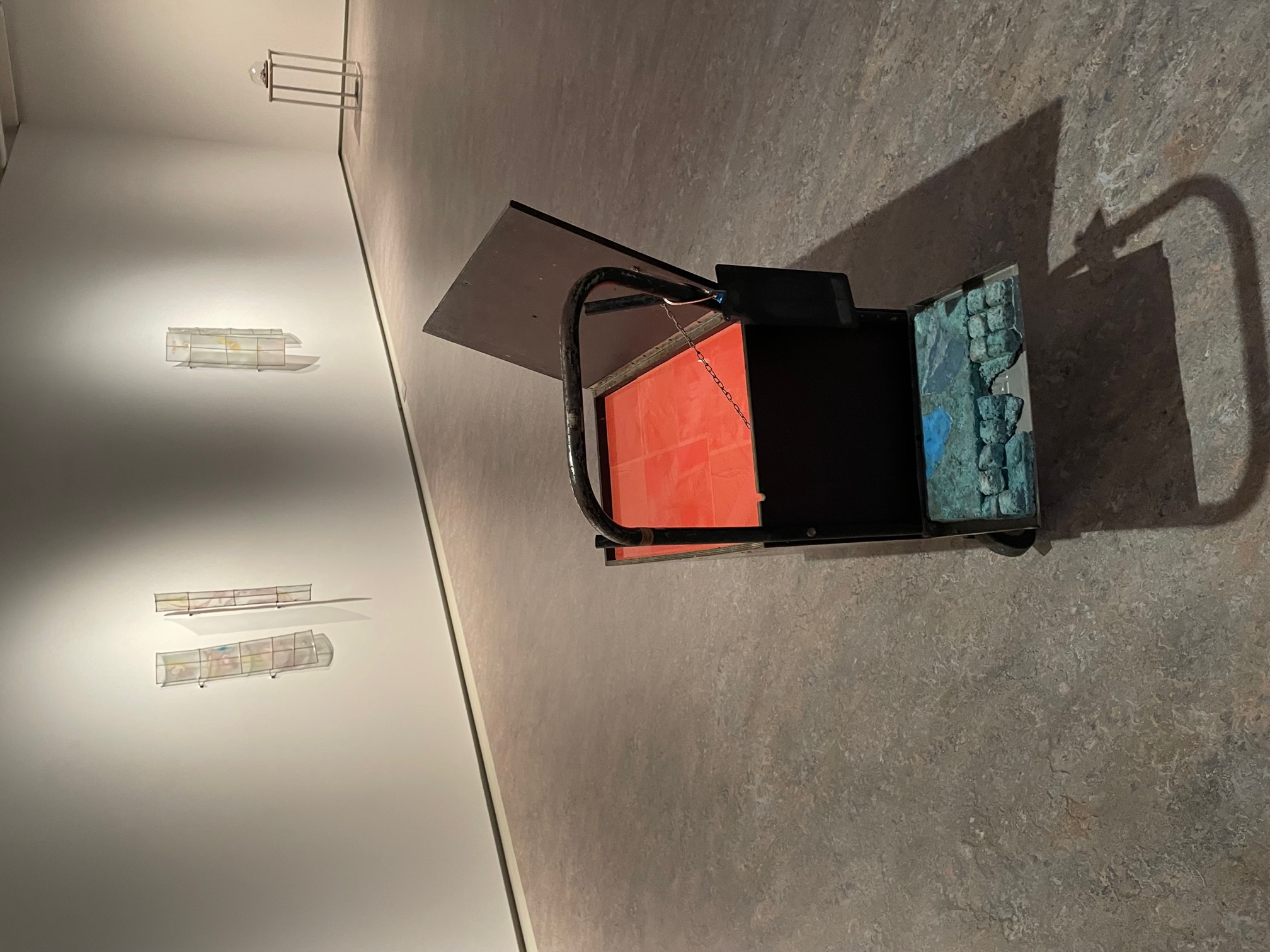
Kuvassa / In the image room with work by Elina Vainio and Sauli Sirviö.

Kuvassa / In the image room with work by Sauli Sirviö.
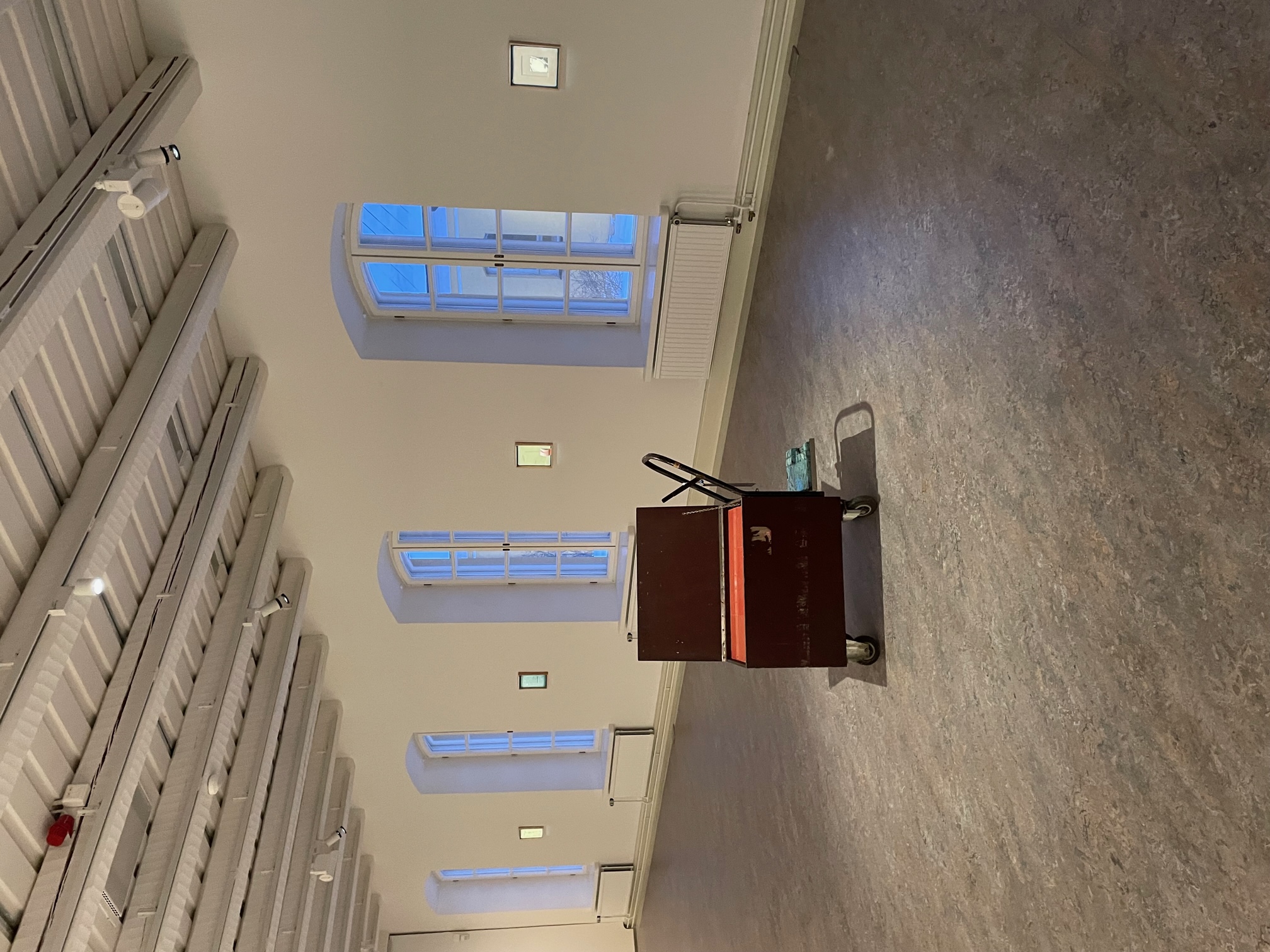
Kuvassa / In the image room with work by Sauli Sirviö.

Kuvassa / In the image room with work 'Heikko kieli / Weak tongue : Ikirouta / Permafrost' by Elina Vainio.

Kuvassa / In the image room with work 'Heikko kieli / Weak tongue :Kulunut katkoviiva / Hackneyed Dotted Line' by Elina Vainio.
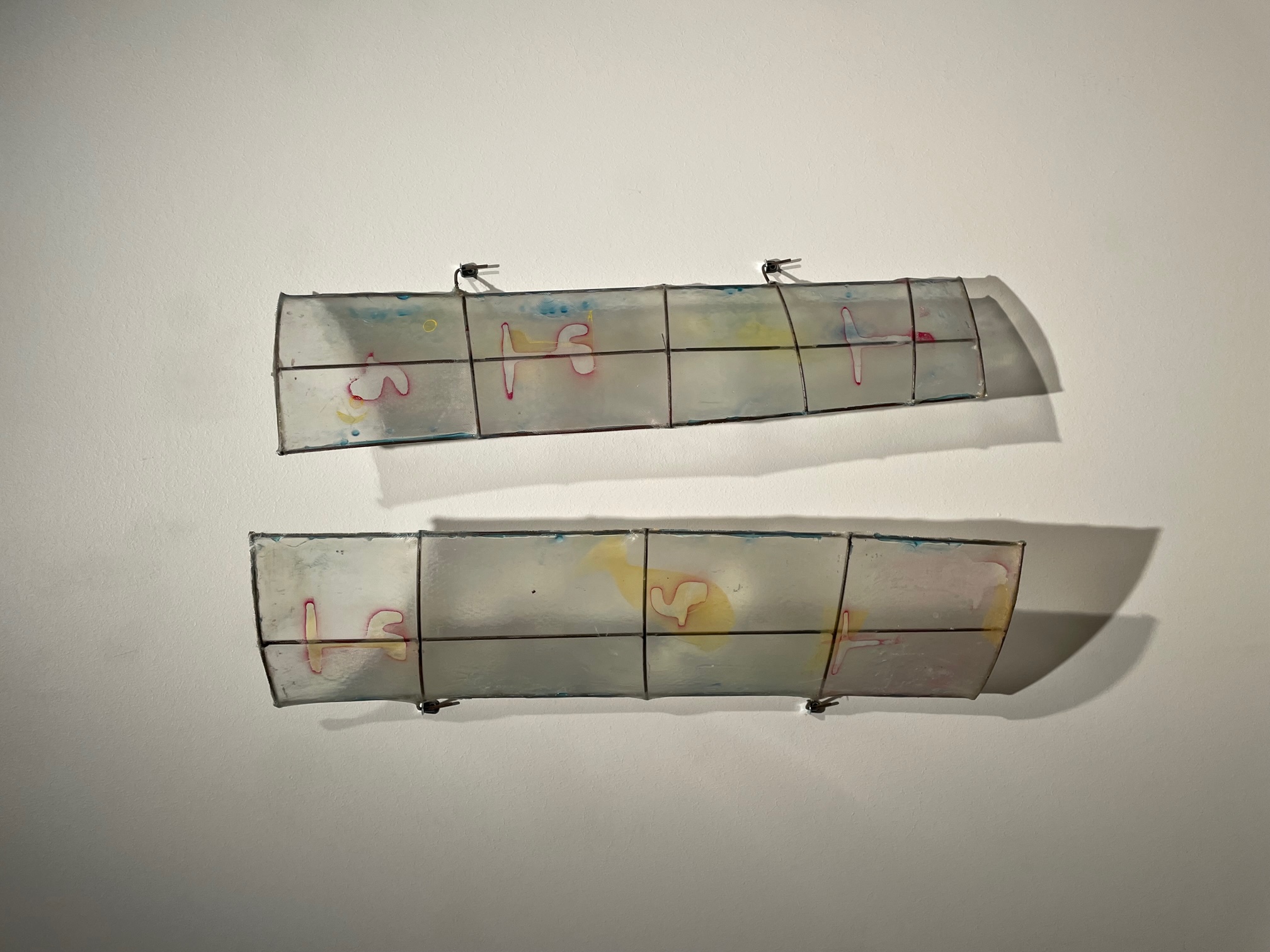
Kuvassa / In the image room with work 'sync' by Sauli Sirviö.

Kuvassa / In the image room with work 'sync' by Sauli Sirviö.
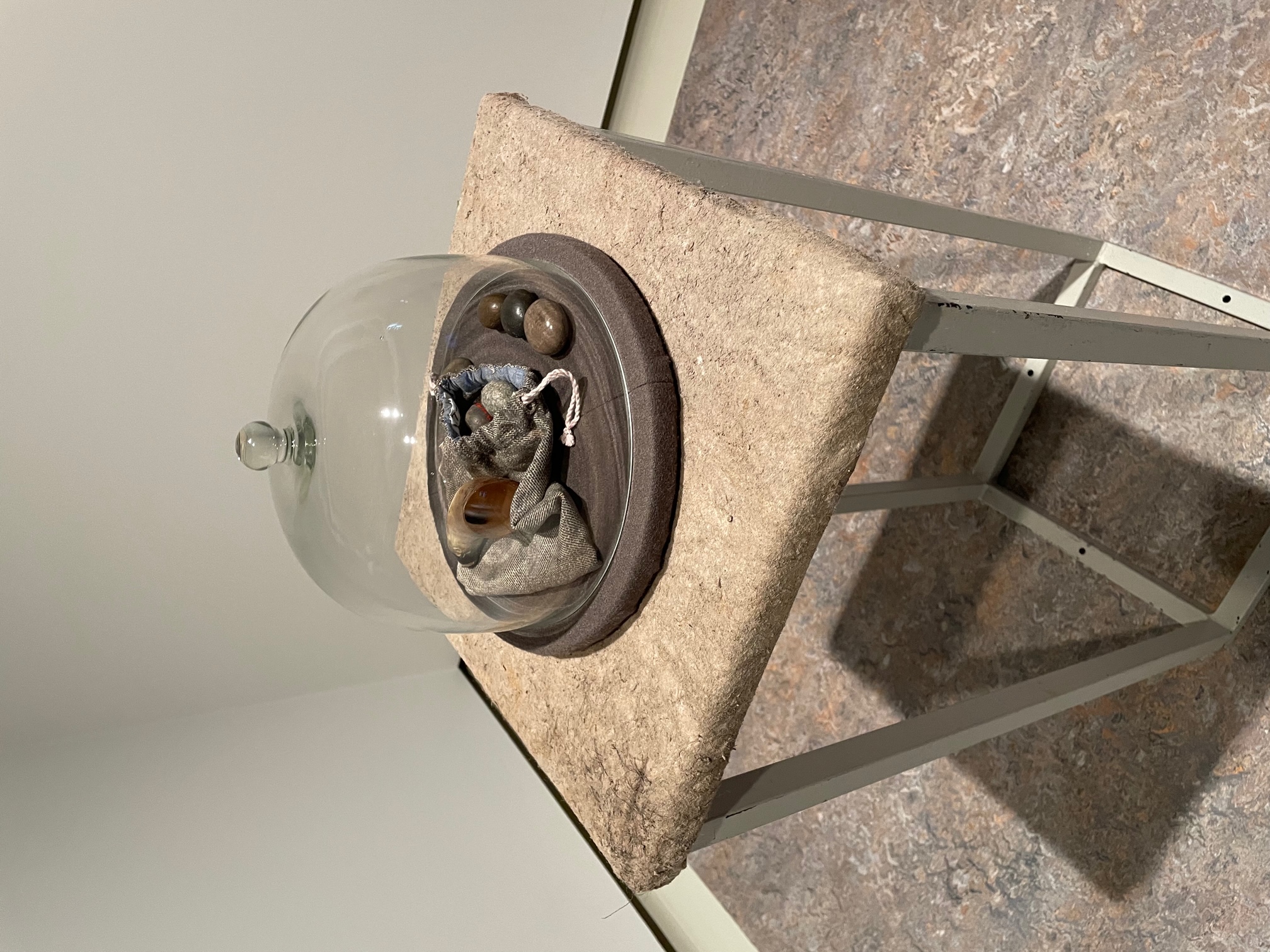
Kuvassa / In the image an item from the South Karelia Museum collection: 'Magic Stones and a cupping horn', that were used in the beginning of 20th century by healer Kristiina Kiuru 'healer-Ristiina' from Terijoki, as a part of Wiipuri Museum collection.

Kuvassa / In the image room with work by Elina Vainio and Sauli Sirviö.
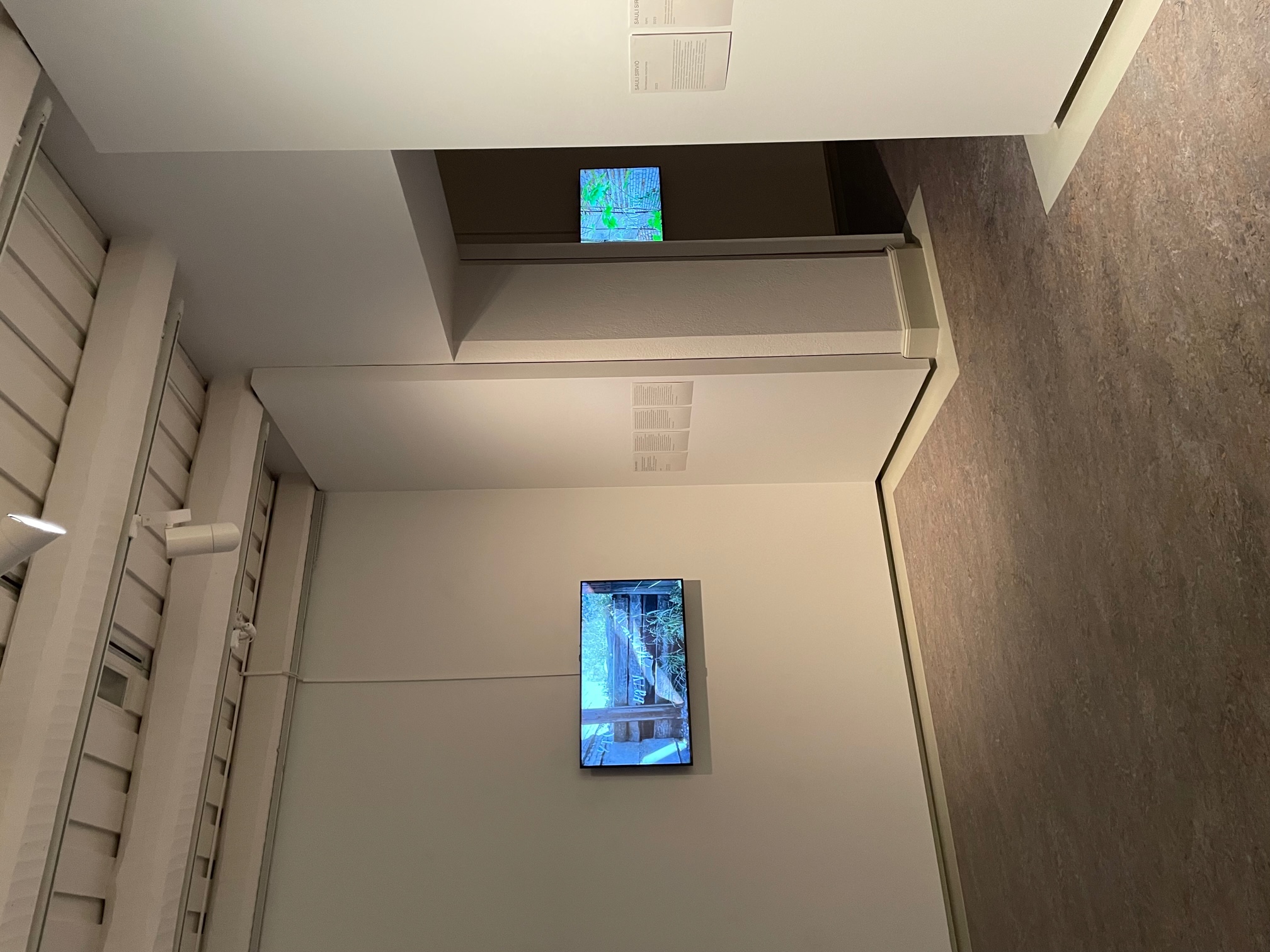
Kuvassa / In the image room with work 'I've been waiting for someone to explain what's going on to me for a long time' by Elina Vainio.
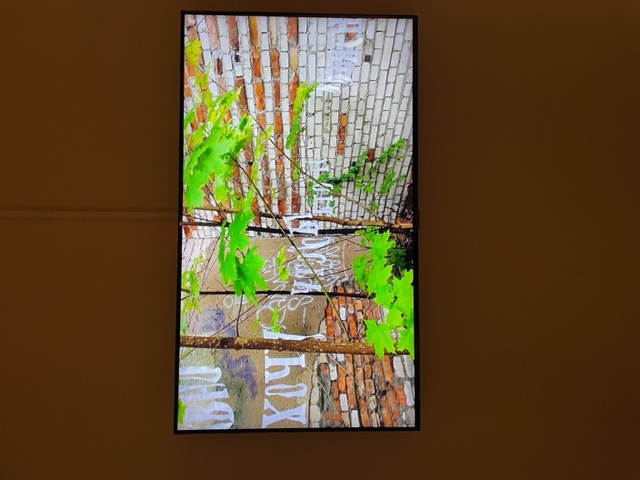
Kuvassa / In the image room with work 'I've been waiting for someone to explain what's going on to me for a long time' (Vyborg) by Elina Vainio.
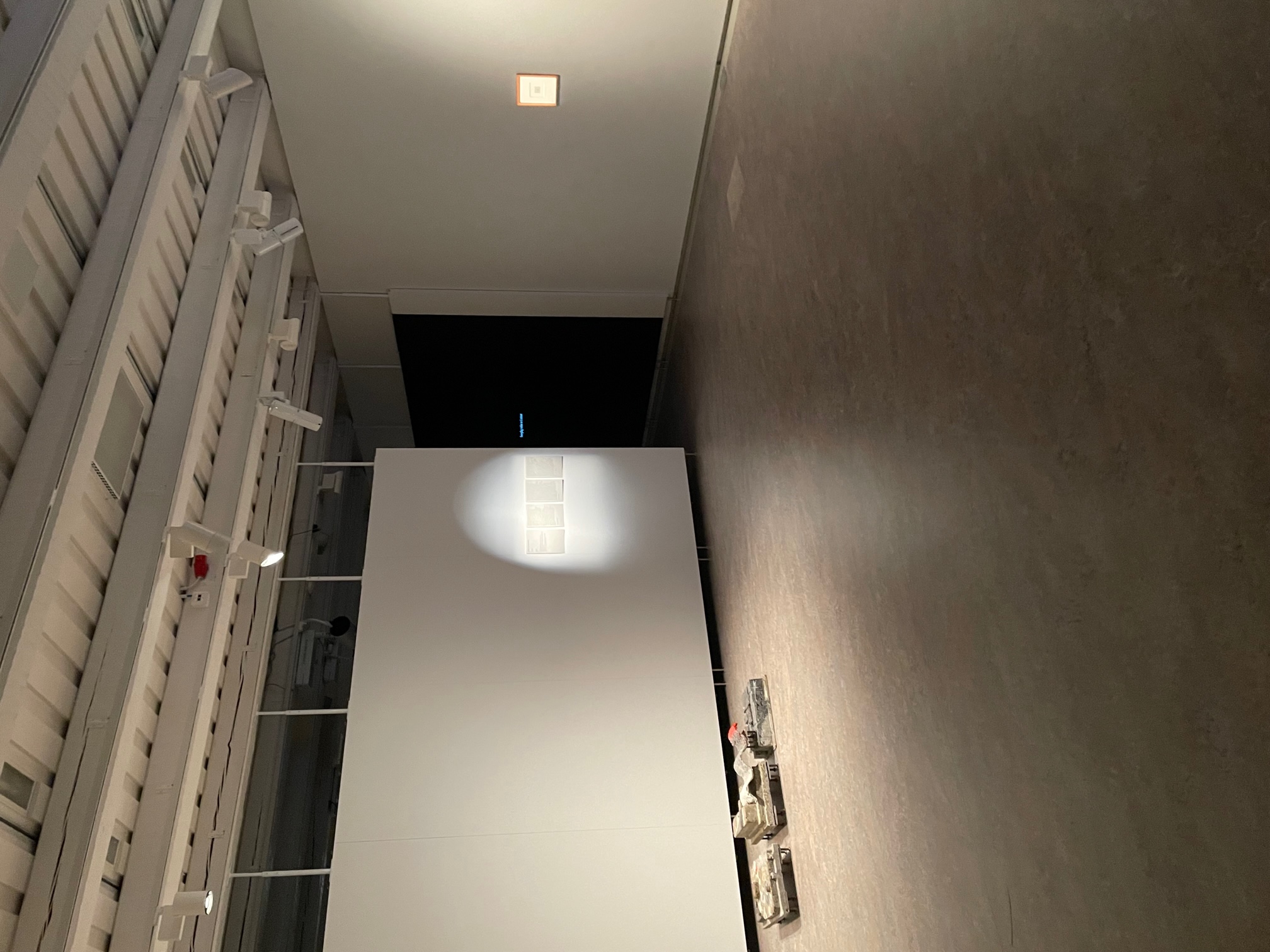
Kuvassa / In the image room with work 'torpor' by Sauli Sirviö.
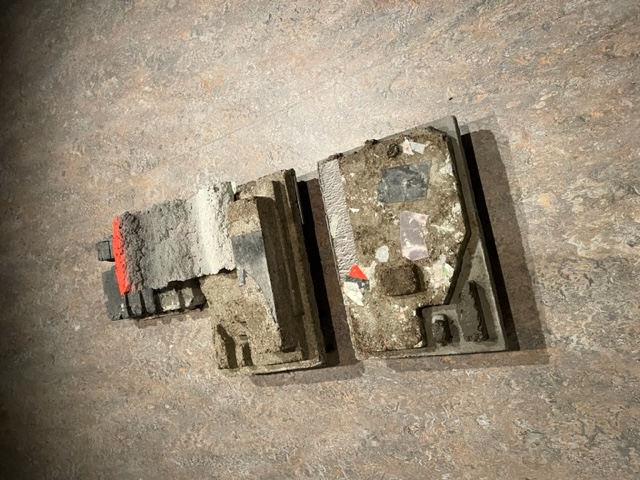
Kuvassa / In the image work 'torpor' by Sauli Sirviö.
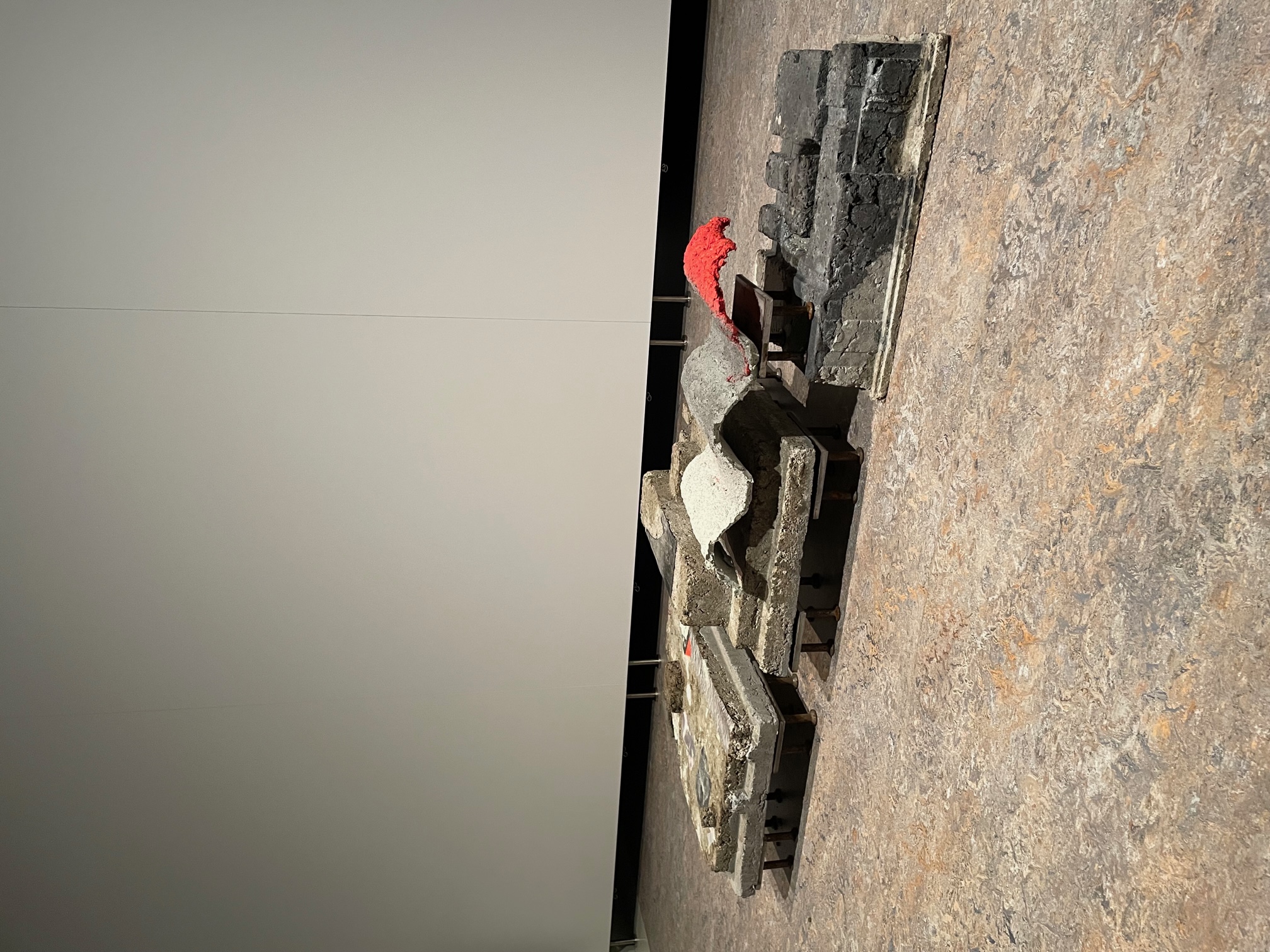
Kuvassa / In the image room with work 'torpor' by Sauli Sirviö.

Kuvassa / In the image an item 'Monrepos parc ticket' admission ticket from 1937 that is a part of the South Karelia Museum collection.
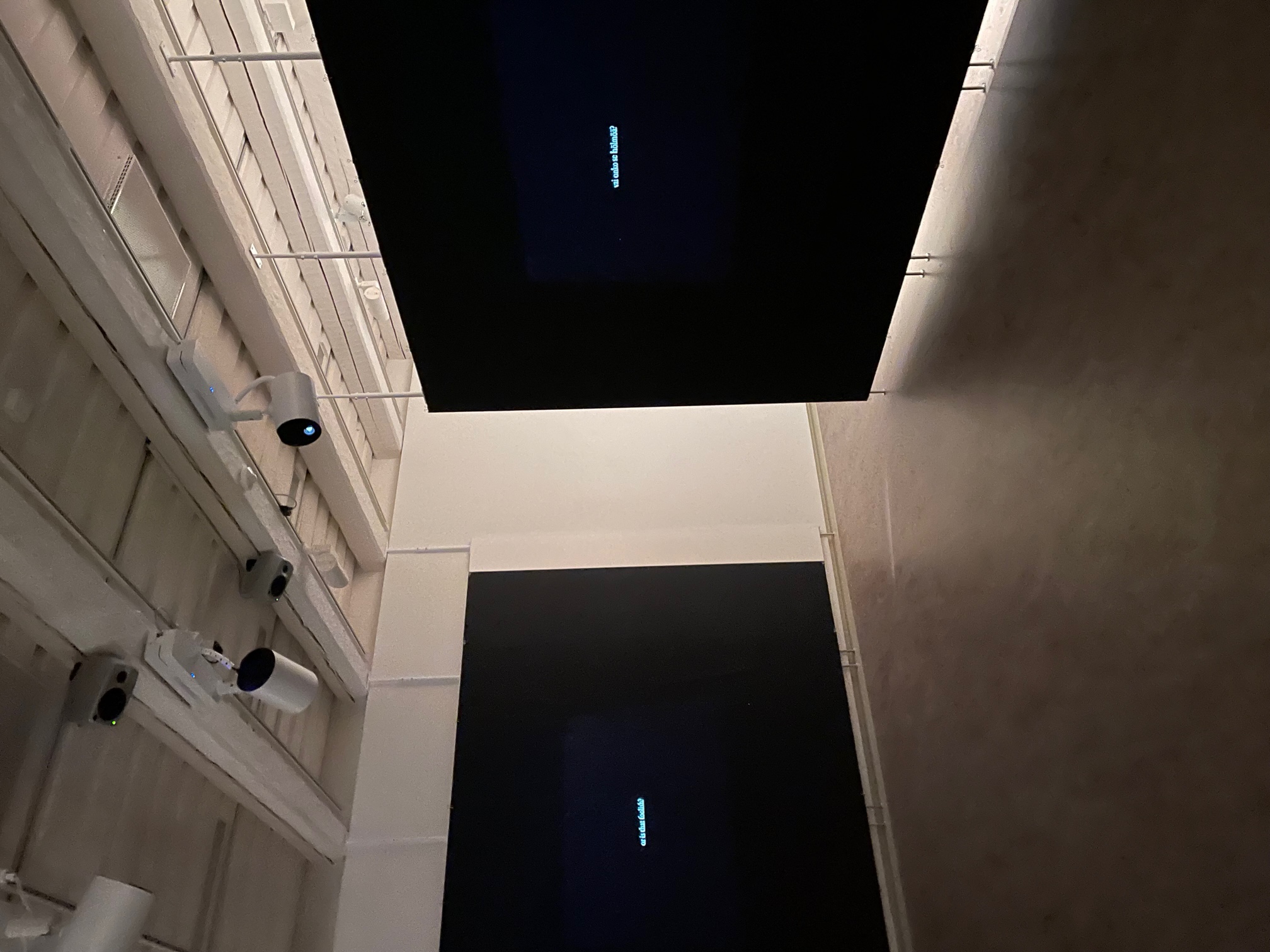
Kuvassa / In the image installation of the work 'Muistatko (a method)' by Iona Roisin.
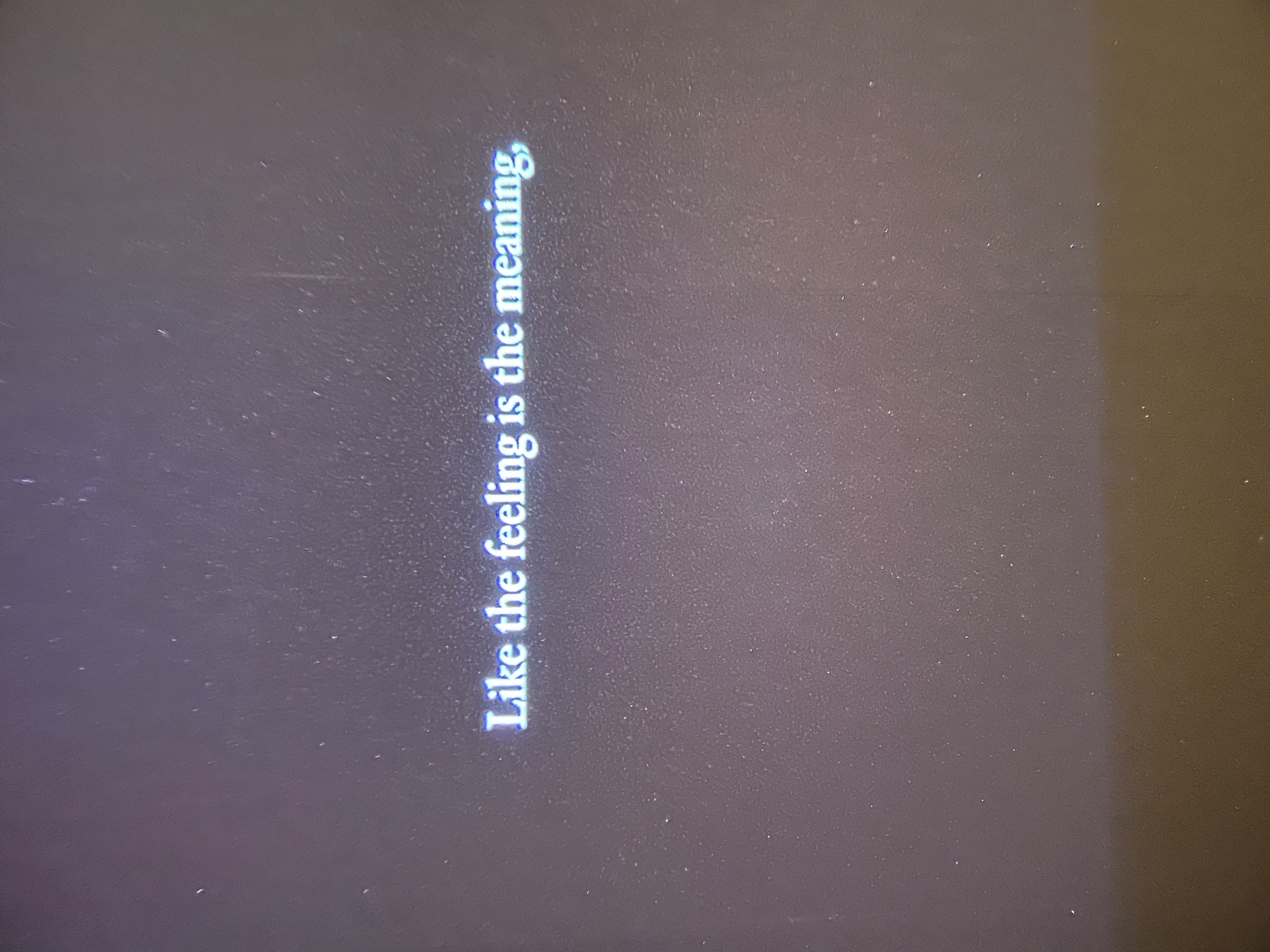
Kuvassa / In the image room of the work 'Muistatko (a method)' by Iona Roisin.

Kuvassa / In the image taken from asbestos mine in the Russian town of Asbest, Sverdlovsk Oblast in 2019.
AIEMMAT ESITETYT VERSIOT HANKKEESTA /
EARLIER EXHIBITED VERSIONS OF THE PROJECT:
DENIAL
In Various Stages of Ruins: julkaisu/ publication 2020
In Various Stages of Ruins: Denial
TOXICITY
In Various Stages of Ruins: Toxicity
SCREENING / AND EVENT:
In Various Stages of Ruins in 2019